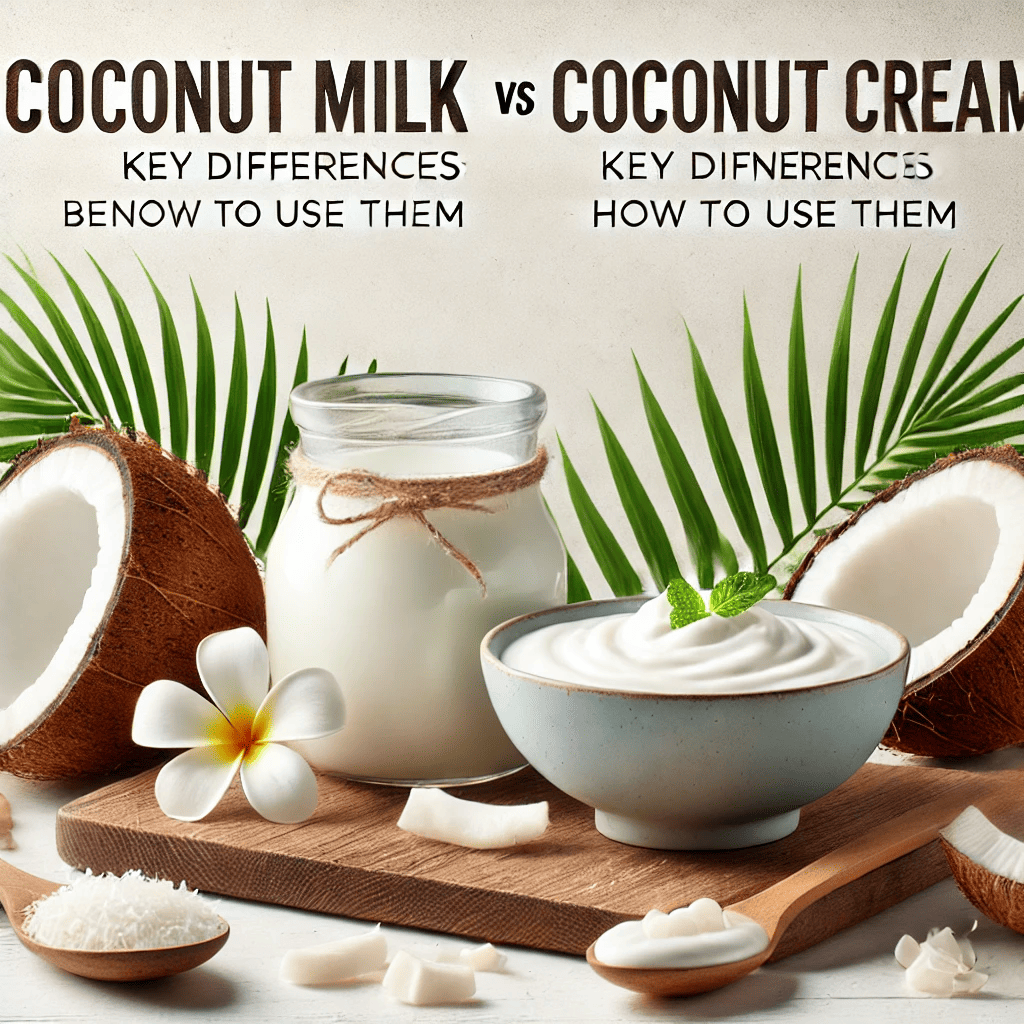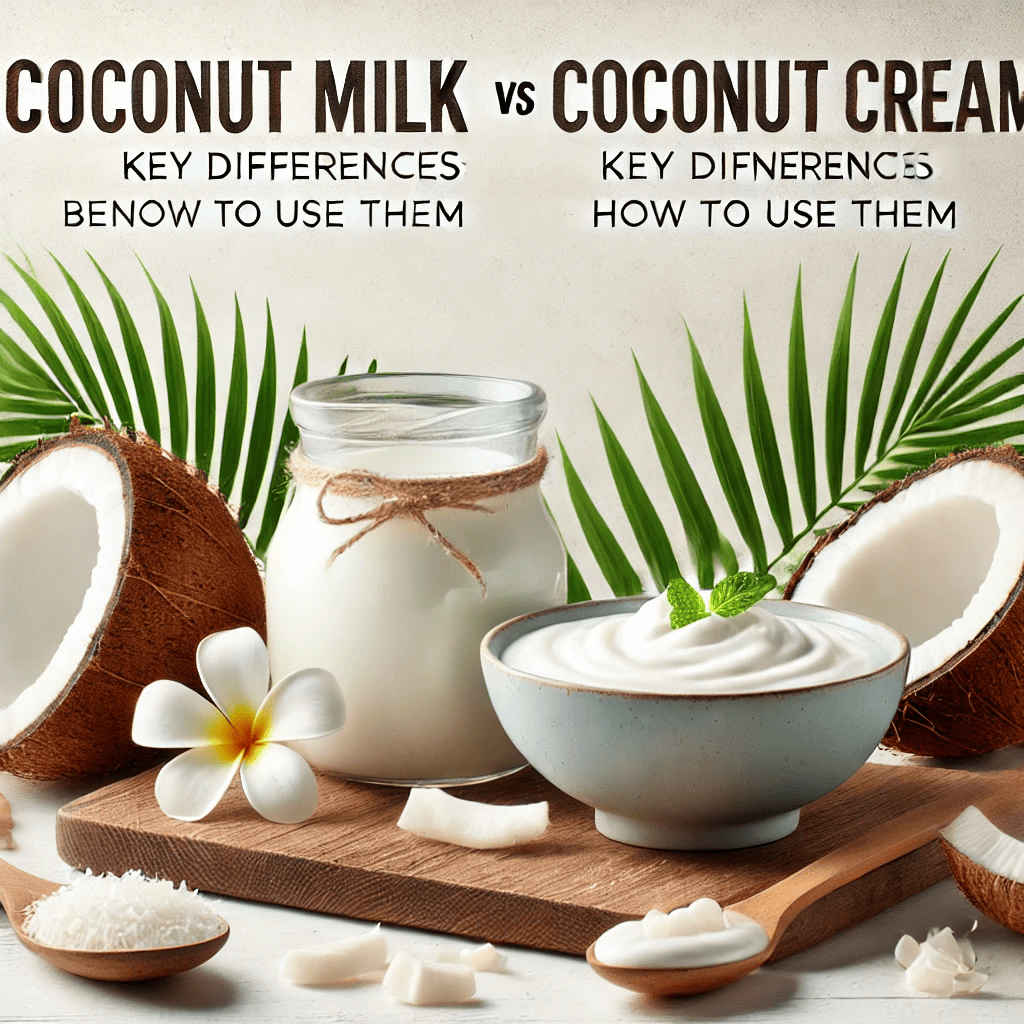
Cream of coconut vs coconut cream impacts desserts and drinks. Understanding the difference is key for flavor and texture in the kitchen.
Distinguishing between two similar-sounding ingredients is crucial for successful tropical-inspired recipes. This distinction impacts the final texture and flavor profile of both sweet and savory dishes.
Mastering the subtle nuances between the two unlocks a broader range of culinary possibilities. It ensures the desired creamy richness in desserts and the authentic flavor depth in curries and beverages.
Coconut has been integral to cuisines across the tropics for centuries. Traditional recipes passed down through generations relied on precise methods for extracting its diverse textures and flavors.
For home cooks, knowing when to use each option simplifies meal preparation. Whether it is adding a sweet note to a tropical cocktail or creating a rich curry base, understanding the function of each ingredient ensures the desired outcome.
Misconceptions often arise regarding their interchangeability. Some believe they can be swapped without consequence, but differences in sugar content and consistency mean substitution requires adjustments to achieve the intended result.
The following guide explores each ingredient’s defining characteristics, clarifying when and how to use them. By understanding their unique properties, both novice and seasoned cooks can confidently create dishes with authentic coconut flavor and texture.
Sweetness level
The sweetness level serves as a primary distinction between cream of coconut and coconut cream. This characteristic profoundly shapes the ingredient’s usage, influencing both flavor profiles and application techniques.
-
Added Sugar Content
Cream of coconut distinguishes itself with added sugar, often cane sugar or corn syrup. This addition significantly increases the sweetness, creating a distinct candy-like or dessert-oriented flavor. Many cocktails rely on this sweetened profile for their characteristic tropical taste.
-
Natural Sweetness
Coconut cream, in contrast, relies solely on the natural sweetness inherent in coconut milk. This subtle sweetness allows the pure coconut flavor to shine without the overwhelming sweetness of added sugars. It is therefore suitable for savory applications where less sweetness is desired.
-
Impact on Texture
The presence of added sugar in cream of coconut affects not only its taste, but also its texture. The sugar contributes to a smoother, almost syrupy consistency. This texture is ideal for blending into drinks or creating creamy dessert sauces, contrasting with the slightly thinner texture of coconut cream.
-
Culinary Applications
Sweetness determines appropriate use. Cream of coconut frequently enhances beverages and desserts where added sweetness is desired, like pia coladas and coconut-flavored ice cream. Coconut cream, with its lower sugar content, works well in curries, soups, and other savory dishes where the natural coconut flavor should complement rather than dominate.
Therefore, an understanding of sweetness profiles is crucial for selecting the correct coconut product. The level of sweetness directly impacts the final outcome, dictating its suitability for various culinary uses and flavor compositions.
Fat content
Fat content plays a defining role in distinguishing cream of coconut from coconut cream, influencing both the texture and richness each imparts. Higher fat content typically translates to a richer, creamier mouthfeel, a factor crucial for culinary applications. This difference arises from variations in processing and the presence, or absence, of additional ingredients.
Coconut cream often boasts a naturally higher fat concentration, derived directly from the coconut milk extraction process. This concentrated fat lends itself to thickening sauces, enriching desserts, or creating a luxurious whipped topping. Conversely, cream of coconut, while still containing significant fat, sometimes undergoes alterations to achieve its characteristic sweetness and syrupy consistency, potentially affecting its overall fat percentage relative to the pure cream.
In essence, the fat content dictates the textural and flavor contributions of each ingredient. Recognizing this distinction empowers cooks to make informed choices, ensuring optimal results in a variety of recipes, from light, subtly coconut-infused dishes to intensely rich and creamy concoctions. Understanding this difference is therefore essential for mastering the art of coconut-based cuisine.
Culinary application
The distinct characteristics of cream of coconut and coconut cream dictate their diverse culinary applications. Understanding how each behaves in different recipes is crucial for achieving desired results. The higher sugar content and smoother texture of cream of coconut lend themselves beautifully to beverages and desserts, while coconut cream’s richer, less sweet profile shines in both sweet and savory dishes.
Consider a pia colada, where cream of coconut provides the signature sweetness and creamy consistency. Attempting to substitute with coconut cream would require adjustments to sugar levels and potentially alter the drink’s characteristic texture. Conversely, in a Thai green curry, coconut cream’s subtle sweetness and higher fat content contribute to a rich, flavorful sauce. Cream of coconut in this context could result in an overly sweet and unbalanced flavor profile.
Ultimately, the choice between cream of coconut and coconut cream hinges on the intended flavor profile and texture. Recognizing their strengths allows for mindful recipe development, ensuring the finished dish embodies the desired tropical essence. This knowledge empowers cooks to confidently explore the versatility of coconut in a wide array of culinary creations.
Tip Metadata
- Category: Ingredient Substitutions
Time & Effort
- Estimated Time: 5 minutes
- Skill Level: Beginner
- Impact: Enhances flavor and texture accuracy in recipes.
Tools or Materials Needed
- Recipe requiring either cream of coconut or coconut cream
- The two ingredients: cream of coconut and coconut cream.
Step-by-Step Guide
- Step 1: Identify the Recipe’s Intended Use Examine the recipe to determine if it calls for sweetness or a more subtle coconut flavor. Is it a cocktail, dessert, curry, or sauce?
- Step 2: Assess Sweetness Requirements If the recipe emphasizes sweetness (e.g., pia colada, coconut ice cream), cream of coconut is likely the appropriate choice. If the recipe benefits from a more balanced, less sweet coconut flavor (e.g., Thai curry, coconut rice), coconut cream is preferred.
- Step 3: Consider Texture and Consistency Think about the desired texture. Cream of coconut yields a smoother, almost syrupy consistency, ideal for blending into drinks or creating rich dessert sauces. Coconut cream imparts a richer, creamier mouthfeel without the added sweetness.
- Step 4: Evaluate Fat Content Impact Recognize that coconut cream has a naturally higher fat content, contributing to a richer final product. If a lighter dish is desired, the lower fat content of a recipe adjusted to use cream of coconut might be preferable.
A common mistake involves substituting the ingredients without adjusting other components of the recipe. If substituting coconut cream for cream of coconut, reduce the amount of added sugar. Conversely, if substituting cream of coconut for coconut cream, consider reducing the overall amount to avoid excessive sweetness. Taste frequently and adjust seasonings accordingly.
Pro Tip or Variation
For a richer flavor in savory dishes, try using full-fat coconut milk and refrigerating it overnight. The thick cream that rises to the top can be scooped off and used as a substitute for coconut cream, offering a more intense coconut flavor and higher fat content.
Best Practices & Expert Tips
- Chill Coconut Cream for Whipping Refrigerate full-fat coconut cream overnight to separate the liquid and solidify the cream for optimal whipping.
- Use Full-Fat Coconut Milk Choose full-fat coconut milk for the richest flavor and best separation when making coconut cream.
- Taste Test and Adjust Always taste the dish after adding either ingredient and adjust sweetness or seasonings as needed to achieve balance.
- Consider Dietary Restrictions Be mindful of added sugars in cream of coconut when catering to dietary restrictions or preferences.
Variations & Common Mistakes
- Coconut Milk as a Substitute Use refrigerated full-fat coconut milk in place of coconut cream, skimming the thick cream from the top.
- Sweetener Adjustments When substituting coconut cream for cream of coconut, add a small amount of sweetener to match the intended sweetness.
- Overlooking Added Sugars Neglecting to account for added sugars in cream of coconut can lead to overly sweet dishes.
- Incorrect Storage Impacts Texture Storing coconut cream improperly can prevent proper separation, hindering the ability to whip it.
Why This Tip Matters
Understanding the distinction between these two ingredients is a small detail that makes a big difference. It ensures the flavor and texture you intend is precisely what you create.
Whether you’re whipping up a batch of tropical cocktails, a creamy curry, or a decadent dessert, knowing when to reach for cream of coconut versus coconut cream allows for greater flexibility and delicious results, regardless of your cooking expertise.
Now it’s your turn! Try incorporating this tip into your next culinary creation and see how it elevates your dishes. Feel free to share your own tips and tricks or leave a comment below with your experiences we’d love to hear how you’re using these coconut products in your kitchen!
Happy cooking!
Images References :
Image used for illustration purposes only. All rights belong to their respective owners.



